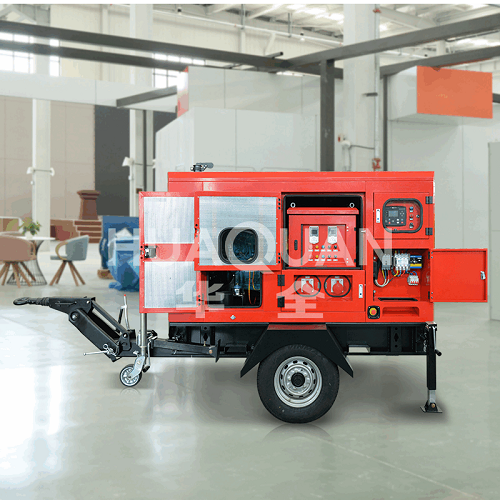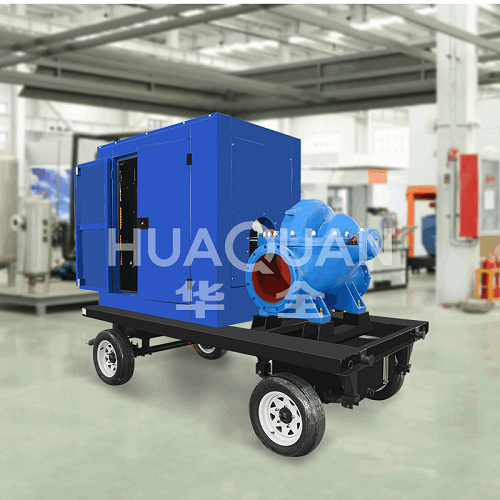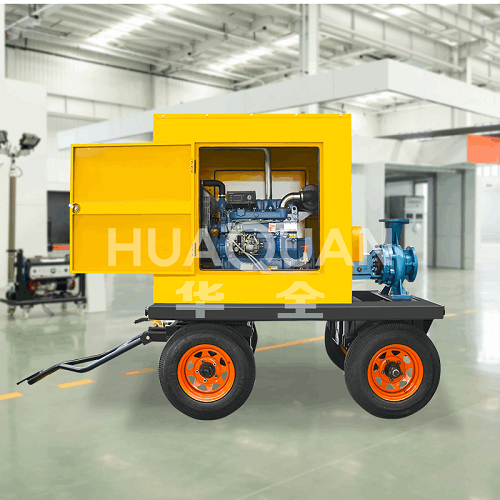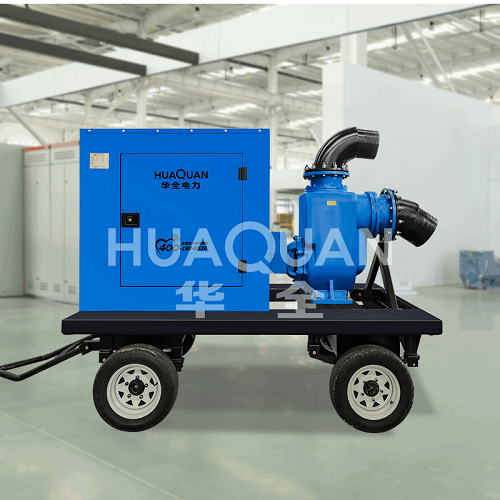The following is a professional guide to the deployment and operation of
flood control water pumps, focusing on key operational aspects to ensure maximum equipment efficiency during flood season:
1. Scientific Deployment: Location Determines Success
Site Selection Principles
Stable High Ground: The pump body must be placed on a solid, flat platform (concrete foundation/steel plate) above the flood level to prevent collapse or submersion.
Water Inlet Optimization:
The water inlet must be completely submerged ≥0.5m below the water surface and away from whirlpools and debris accumulation areas.
Trash racks/screens (mesh size ≤20mm) must be installed to prevent blockage. In deep water areas, the water inlet must be suspended with buoys to prevent sediment ingestion.
Water Discharge Safety: The drainage pipe must be extended to a stable flood discharge area away from the emergency site (such as the downstream river channel) to prevent backflow.
Special Requirements for Mobile Pump Trucks
The wheels must be secured with sleepers and triangular wedges to ensure a slope of ≤5°.
Obstacles must be removed from the operating radius, and radiator ventilation must be ensured (≥3m from the wall).

II. Pipe Connections: Balancing Efficiency and Safety
III. Start-Up and Shutdown Operations: Details Determine Reliability
Startup Procedure (Using a Diesel Engine Pump as an Example):
1. Pre-check: Oil/coolant level, fuel level, battery voltage, and water inlet pipe tightness.
2. Water Priming:
Self-priming Pump: Open the water priming valve and start the vacuum pump until the negative pressure reaches ≥ -0.08 MPa (stable water column).
Submersible Pump: Ensure the motor is completely submerged.
3. Startup:
Preheat the diesel engine at idle for 3-5 minutes (water temperature ≥ 40°C);
Slowly open the outlet valve to 50% open → observe the pressure gauge for stability → gradually open to 100%.
Shutdown Procedure:
1. Slowly close the outlet valve to 50% open → cut off power → completely close the valve;
2. In an emergency shutdown, immediately cut off power (only in the event of an equipment malfunction).
Contraindications:
Do not run dry for more than 30 seconds (burning of the mechanical seal);
Do not operate with the outlet valve closed for more than 1 minute (overheating and deformation of the pump body).
IV. Operation Monitoring: 24-Hour Continuous Monitoring
V. Multi-Pump Collaboration: A 1+1>2 Strategy
1. Parallel Operation to Increase Flow:
Pumps of the same model are connected in parallel, with their outlets merging into a main pipe of equal diameter (to avoid over-flow);
Control the start-stop interval to ≥ 30 seconds to minimize power grid impact.
2. Series Operation to Increase Head:
Pump spacing ≥ 10 pipe diameters, with a buffer tank installed between them;
The power of the downstream pump must be ≥ that of the upstream pump to prevent overload.
3. Relay Drainage (Long-Distance Drainage):
A transfer pump station must be installed every 800-1000 meters to prevent a single pump from operating beyond its capacity.
VI. Emergency Response Checklist
Conclusion: Practice in combat to ensure victory in all battles. The operational effectiveness of flood control pumps depends 30% on equipment performance and 70% on precise human operation. It is recommended to conduct "blind drills" every quarter: randomly set fault points (such as simulated pipeline ruptures or power outages) and require teams to restore drainage within 15 minutes. Only by refining operational procedures into instinctive responses can we build an unbreakable "life pump" during torrential rains.



